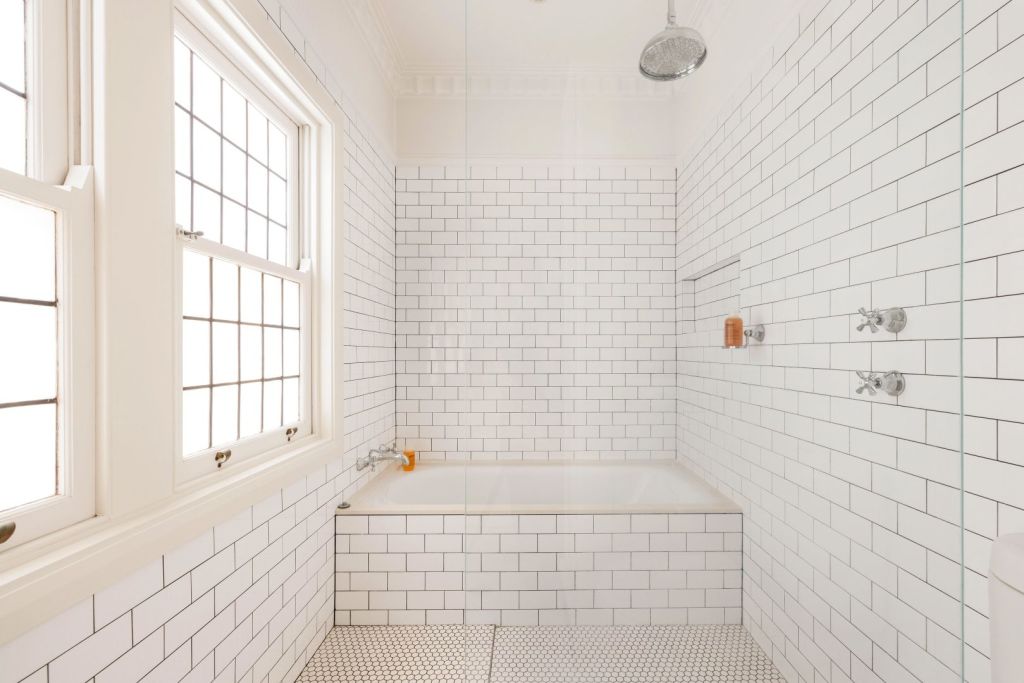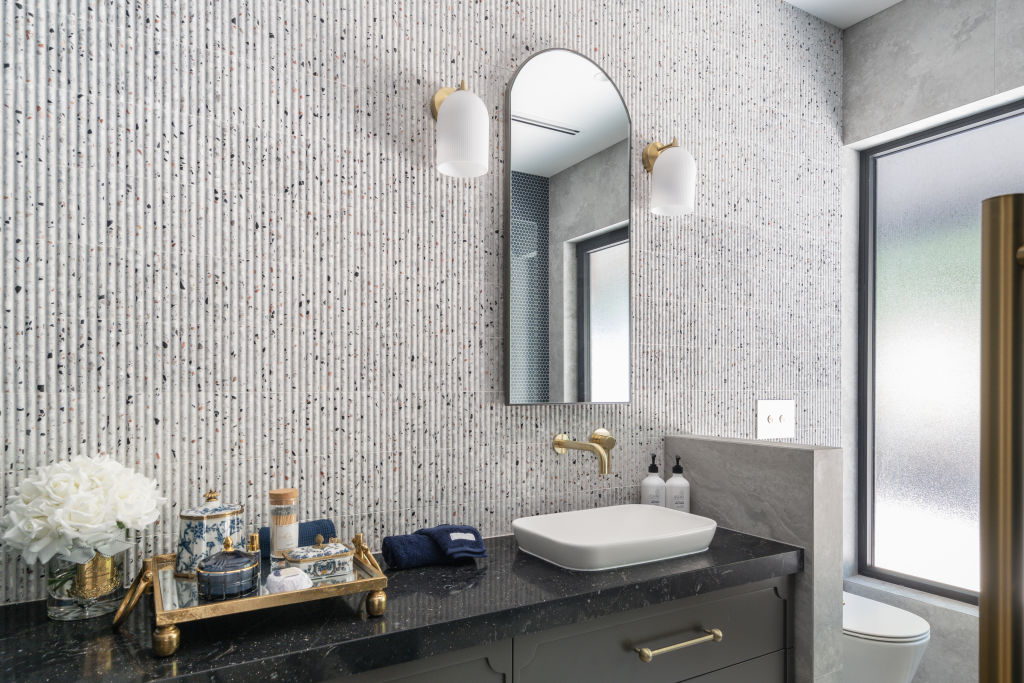A bathroom renovation timeline

Though it’s tricky estimating the time a bathroom renovation will take – it will depend on the scope and complexity of your design and factors including the presence of asbestos, old pipes and the quality of your builder – we give you a detailed account of what will happen and when.
The timeline
We spoke to Wilhelm Harnisch, Chief Executive, Master Builders Australia; Cameron Frazer from Ask An Architect, the building advisory service of the Australian Institute of Architects; and Nathanael Forster of the Australian Master Tilers Association (AMTA) to give you important guidance on the planning, demolition and installation of your bathroom.
Stage 1. Plan and prep – three to six months
- Research ideas and engage a designer (architect, interior architect or bathroom designer).
- Work with the designer to draw up plans. If structural work is involved, the designs must be drawn up by an architect or licensed building designer.
- Apply for a building permit if you plan to do structural work or make significant changes. A building permit can only be submitted by a registered building practitioner – this includes architects, registered builders and licensed building designers.
- Engage a building contractor. Your designer can organise a contractor on your behalf, but Frazer says if you are managing the process make sure you get at least three quotes to make sure you get the costings right.
- Select your builder and sign a contract.
- The contractor will now organise subtrades.
Harnisch strongly recommends that home renovators hire a builder who is not only licensed and insured but is experienced in renovations rather than new builds. “The skills and experience needed are different, especially since you are not starting from scratch.
“Research always comes first. Be as clear as you can about what you want, and don’t want, so you can set clear expectations with your builder. The benefit of a builder with a focus on renovations is that they can give you a lot of advice about what’s possible and not possible, and what the unexpected pitfalls might be with your ideas – like hidden installation costs on certain products,” Harnisch says.
If you need to do structural work, such as removing a wall, home warranty insurance is highly recommended.
Another hugely important factor to consider when renovating older homes [pre-1984] is the presence of asbestos, which needs to be removed by a licensed specialist. “There is nearly always asbestos in bathroom walls and this is especially dangerous because it can be waterlogged and decayed,” warns Harnisch. “When you start ripping it up that’s when it can be ingested.”

Stage 2. Install – one to two months
- Disconnect services. This must be done by a licensed plumber and electrician.
- Removal of any bathroom items you don’t plan to keep.
- Your tradespeople rough in (lay out basic lines) new framing, plumbing and electrical installations.
- Specialists install floor, wall and ceiling lining. This includes surface preparation by the tiler. Forster says two causes of tile failure are not preparing a substrate and lack of knowledge about expansion and contraction of joints.
- A licensed tradesperson (tiler, plasterer or builder) installs waterproofing.
- Finishing trades take place, including tiling, plastering, cabinetry and glass work.
- A licensed plumber and electrician fit appliances and water fixtures.
Frazer points out that when choosing unusual materials, such as a concrete or stone bathtub or vanity, additional structural design may be needed. “A concrete bathtub, which is already heavy, that is filled with water, will have additional load-bearing requirements.”
A good tiler will spend time setting up a job before they begin, says Forster. “They will work out where all the cuts go to avoid small cuts or to allocate them in inconspicuous areas and work out details such as tiles lining up with vanity features. If the tiles are to go to the ceiling the wall substrate has to be fixed off according to Australian standards.”
A major issue with bathroom renovations and new builds, and one of the top three defects in the Australian building industry, is faulty waterproofing. “All waterproofing should be completed to the AS 3740-2010 Waterproofing of domestic wet areas standard,” says Forster. “In some states you don’t need to be licensed, which is ridiculous. Only ever use a licensed tradesperson who has completed the appropriate training, otherwise if something goes wrong, you can’t blame anyone.”
The AMTA is campaigning for greater regulation of the waterproofing industry, but until then always use a licensed tradesperson who is a member of an industry association.
We recommend
We thought you might like
States
Capital Cities
Capital Cities - Rentals
Popular Areas
Allhomes
More
- © 2025, CoStar Group Inc.







